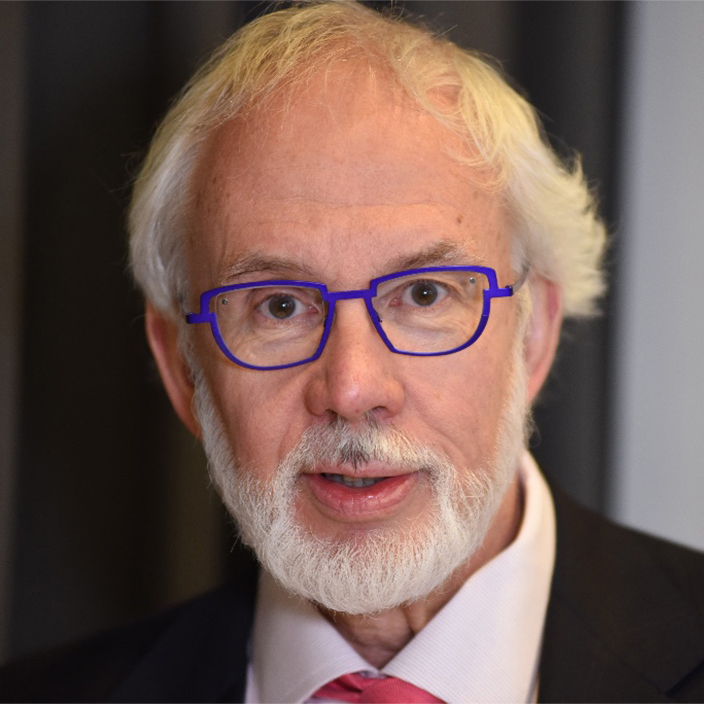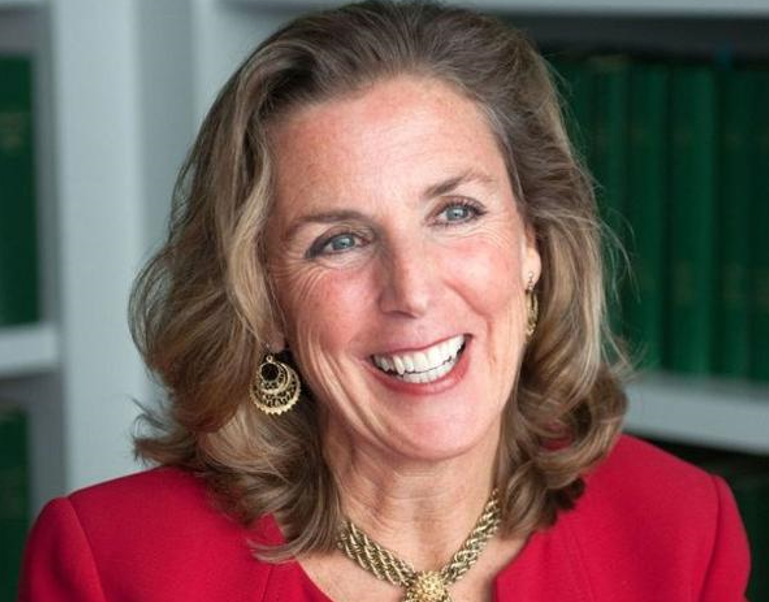I met Katie McGinty at a small private dinner in Washington, D.C. where the topic was climate change and the energy transition. The dinner group included very senior people from companies, investors, current and former federal elected officials, NGOs, and think thanks. We sat next to each other, but it was a group discussion, so we didn’t really get a chance to talk. I did have a chance to listen to what she had to say and was very impressed. Katie had to leave early to catch a train for an early board meeting but as she was leaving, I said, “I’m going to pitch you something. She said, “Go ahead!” So I did. It was to do this interview! She kindly agreed and it was a great conversation.
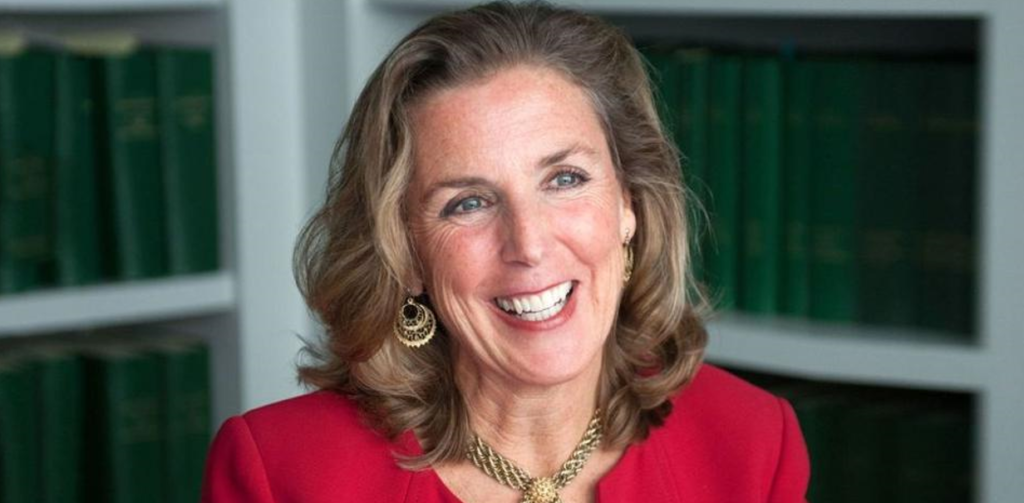
Katie McGinty, Vice President, Chief Sustainability and External Relations Officer at Johnson Controls
Eccles: Katie, your background is quite fascinating, spanning chemistry, law, public service, and corporate governance. Could you start by sharing a bit about your childhood and what led you down this path?
McGinty: I’m the ninth of 10 kids, growing up at a time when many people went
straight from high school into the workforce. I had a different idea. I wanted to go to college. In my household, that meant finding a practical and pragmatic career path that promised a good paycheck at the end. That’s what led me to study chemistry.
In a busy household, we learned early to figure things out, get along, and solve problems rather than cause them. This foundation shaped my view on challenges in life. By bringing a positive, can-do attitude and diverse perspectives together, you can solve problems and create something new and positive.
Eccles: What was it about chemistry that drew you in and felt like your calling at the time?
McGinty: I won’t claim it was a comprehensive plan, but I’m glad for how it turned out. In chemistry, I found the ability to sharpen my mind to navigate challenging problems and the inspiration to innovate and bring technology forward, transforming problems into opportunities.
Eccles: After your undergraduate work in chemistry, you made a significant shift to law. What prompted that change?
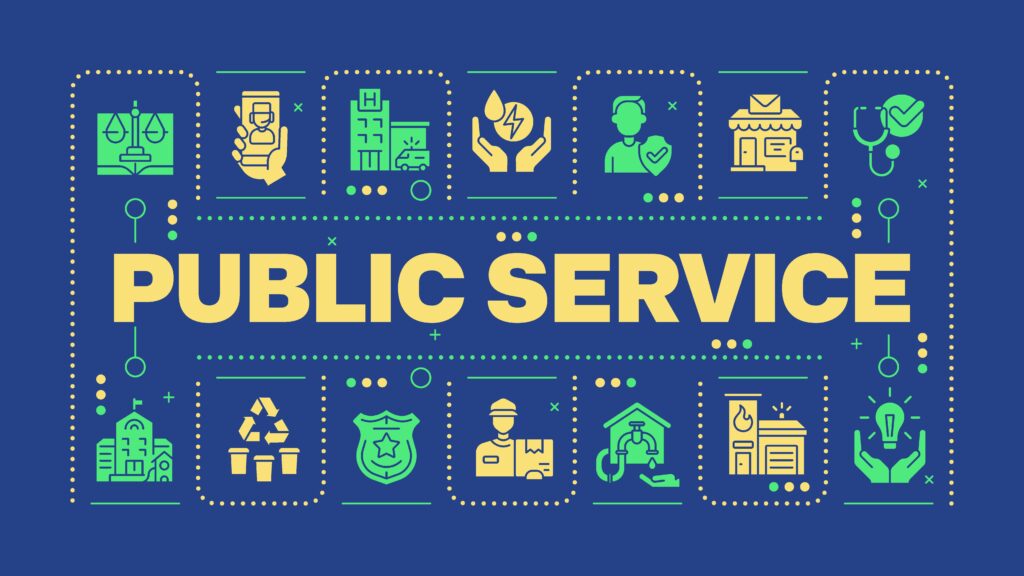
Public service dark blue word concept. Government services. Law enforcement and healthcare. Visual communication. Vector art with lettering text, editable glyph icons. Hubot Sans font used (Photo: iStock)
McGinty: I was inspired by public service. My father was a police officer, and as first- generation Americans from Ireland, my parents had great respect for the United States. I wanted to use my talents to serve the country. At Columbia Law School, a new program had launched in science, law, and technology—highlighting how public policy can drive excellence in research and commercialization. This led to a fellowship on Capitol Hill, working for Senator Al Gore, which fired me up about creating a full ecosystem in the United States from basic research to commercialization.
Eccles: Which eventually led you to the White House. Can you share more about your role there and your work in the Clinton Administration?
McGinty: I served as Deputy Assistant to President Clinton and chaired the White House Council on Environmental Quality. When we came into office, the country was in a mild recession. Priority number one was economic growth and job creation. I loved the creative challenge to think about environmental challenges differently and specifically in a way where tackling environmental problems unlocked growth. In the President’s very first budget we put the idea to work and launched a new initiative to clean up drinking water and to make that happen by investing in clean water infrastructure—an initiative that was good for the environment even as it created vast new numbers of jobs laying pipes and building treatment systems.
The themes that inspired me earlier became pillars of our work. Bringing tangible technology to bear; bringing different people and perspectives together; tackling problems but in a way that created economic opportunities.
Eccles: After an esteemed career in Washington, D.C., you returned to Pennsylvania. What led you back?
McGinty: Newly elected Governor Ed Rendell persuaded me. Serving as Secretary of Environmental Protection was a thrill and honor because I had the chance to show time and again that technology provided new pathways to bring people together around meeting environmental problems rather than the old thinking that pitted the economy against the environment. We showed that practical, pragmatic approaches based on technology and innovation can find common ground.
For example, using methane bio-digesters to turn animal waste into clean natural gas enabled us to protect rivers and streams while giving farmers a new source of revenue. And technology reclaiming minerals and metals from abandoned mine drainage promised to support local manufacturing operations while restoring streams that otherwise had been harmed by the polluted runoff.
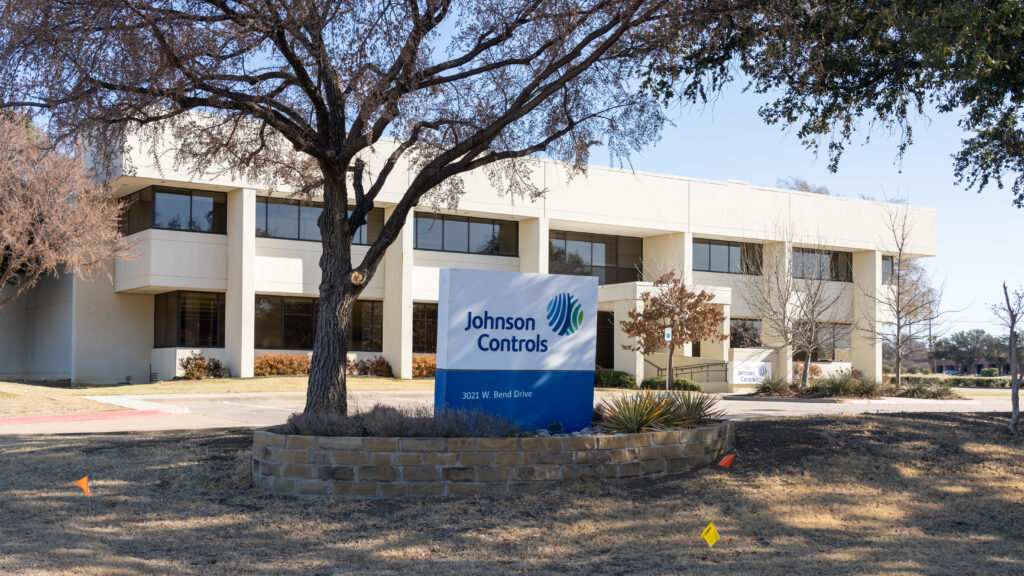
Irving, Texas, USA – March 20, 2022: Johnson Controls office in Irving, Texas, USA. Johnson Controls International is an American Irish-domiciled multinational conglomerate. (Photo: iStock)
Eccles: You’ve had an extensive career in public service. What led you to transition to the private sector, specifically Johnson Controls?
McGinty: I’m passionate about execution and getting things done. Johnson Controls has always impressed me with a strong commitment to tackling difficult challenges. Their focus on improving building efficiency and sustainability aligns perfectly with my values. Working with Johnson Controls in many chapters of my career, I saw how they brought innovative technologies and innovations around financial models and building partnerships to bear to drive action on climate change.
Demonstrating early on that we can cut energy consumption and utility bills with efficiency upgrades showed that there does not need to be a tradeoff between growing a company and helping address climate change. Johnson Controls went further and demonstrated how a company could achieve economic savings through efficiency and not even have to shoulder the upfront cost of the equipment upgrade since the upgrades could be financed through the savings.
Eccles: Can you elaborate on how Johnson Controls is making buildings more sustainable and the technologies involved?
McGinty: Buildings are a major source of global greenhouse gas emissions. The good news is we have the technology today to turn that around. It’s a trifecta: energy efficiency, electrification, and digitalization. Energy efficiency alone can cut energy bills and carbon by 30%. Electrification further reduces costs and emissions. Digital platforms like OpenBlue not only optimize HVAC but interconnect all vital systems in a building so that the building becomes something like a battery—able to earn revenues by conserving and then selling energy back to the grid when the price is right, and detect viruses, enhancing the mission of institutions like hospitals.
Eccles: What about the critics who see sustainability solely as an ESG issue?
McGinty: Many CEOs recognize the financial value of sustainability. They have seen firsthand that a strategic focus on sustainability strengthens the bottom line, enhances the brand, and attracts top talent. For those yet to embrace it, I suggest mobilizing a tiger team of the company’s best and brightest to explore sustainability’s potential to drive their success, much like companies are doing with AI. It’s about unlocking innovation and transforming cost centers into profit centers while firing up employees like never before.
Eccles: Speaking of AI, with the growing demand for data centers, can this demand be met sustainably?

Arial image of a forking road within a forest of horse chestnut trees – concept for “taking a decision” / choice / options. 3d render (Photo: iStock)
McGinty: We’re at a fork in the road. We can either face a collision or choose creativity. With efficient technologies like Johnson Controls smart HVAC system (the “YVMA”) we can cut data center energy needs for cooling by almost 80%. We can build on that too and create capacity on the grid by upgrading other big users of energy like hospitals, universities, and water treatment facilities in the area of the new data center to lead in AI, while we upgrade our communities and strengthen, rather than burden, the grid. We can creatively meet energy needs and benefit the environment and economy.
Eccles: How important are public-private partnerships in achieving these sustainability goals?
McGinty: They’re crucial. Convening local leaders, utilities, and community institutions can lift social infrastructure, reduce emissions, and meet global climate targets.
Combining public resources and private sector technology and financing delivers wins for communities, the country, and the climate.
Eccles: With your diverse background, what makes you optimistic about the future?
McGinty: I’ve seen firsthand how technology and collaboration can transform challenges into opportunities. Technologies like heat pumps demonstrate that we have the tools to create a more efficient and sustainable future. It’s about taking these solutions off the sidelines and putting them to work.
Eccles: Katie, thanks so much for your time. I’ve learned a lot, and I’m impressed with what you and Johnson Controls are doing. I’d love to keep in touch!
McGinty: Me too!
SUBSCRIBE TO OUR NEWSLETTER
Subscribe our newsletter to receive the latest news, articles and exclusive podcasts every week

